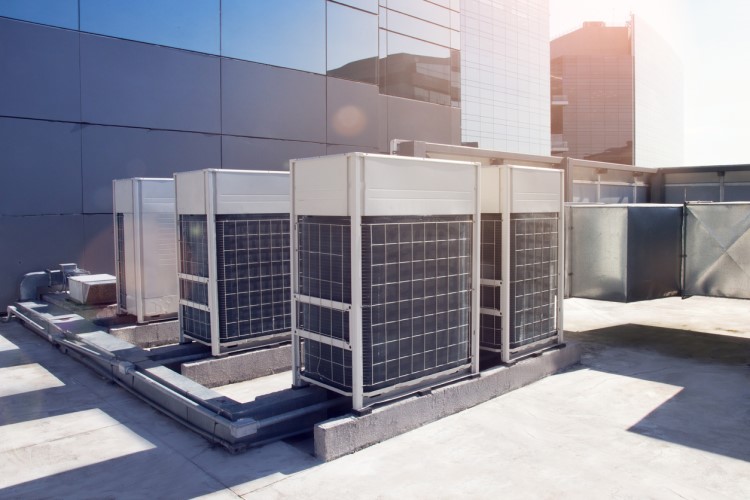5 Common Types of Commercial HVAC Systems: What You Should Know
Although the HVAC contractor market took a hit during the pandemic, it has still managed to achieve growth over the past five years. In 2023, the heating and air conditioning contractor market in the United States alone is worth about $123 billion. There are more than 146,000 HVAC contractor services throughout the country.
As the years go by, scientists and engineers continue to develop new types of commercial HVAC systems. These days, there are now many popular options that commercial buildings have to choose from. This makes it easier for a business to enjoy an HVAC system that meets its precise needs.
At the same time, it can make it harder to figure out which HVAC system is the right one for a given business. So what are some of the most common types of commercial HVAC systems that might be right for your business?
Read on to learn all about the most essential things to understand about these commercial HVAC systems!
1. Single-Split Systems
Single-split systems are among the simplest HVAC options for a commercial building. They are also one of the most popular options.
A single-split system has a single unit that your HVAC contractors will install inside. That unit will be connected to a single outdoor unit by refrigerant lines. Air will then pass between the indoor and outdoor units and receive cooling from an evaporator coil.
The simplicity of these systems often makes them a good choice for smaller buildings. They don’t take up much space and are a great choice for a limited HVAC unit budget compared to many other alternatives. On top of that, their simplicity makes them easy to maintain and repair.
Single-split HVAC systems also produce less noise than many more powerful systems. However, the limited power that a single-split system provides means that it may not be the right choice for larger commercial buildings. If you try to use a single-split system in a large building, there is a good chance that you will enjoy regulated temperatures near your unit but not in the farther parts of the building.
2. Multi-Split Systems
Multi-split systems work in much the same way as single-split systems. The main difference is that you can have multiple indoor units connected to your single unit outdoors.
This allows multi-split systems to provide more flexible temperature regulation. If you want to keep one room at one temperature and another room at another, you can set a multi-split system to provide different amounts of temperature regulation to each of them.
Multi-split systems also enjoy better energy efficiency than single-split alternatives. However, they are also more expensive. On top of that, although they provide more temperature-regulating power than single-split systems, they can still struggle with colder climates.
3. VRF Systems
VRF stands for variable refrigerant flow. VRF systems are also sometimes called VRV systems.
These systems can provide a lot of power. As a result, large commercial buildings like hotels and hospitals sometimes use them. They are also simple to install and keep in excellent condition.
Like multi-split systems, they provide flexibility and let you provide individual temperature control to different parts of your building. However, they are often more expensive than even multi-split systems.
4. Rooftop Units
Rooftop units are a popular choice for smaller commercial buildings. Because they are installed on the roof, they will not take up any of your limited indoor space. At the same time, rooftop units can provide a lot of temperature regulation power, so they are a good choice for larger buildings as well.
A standard rooftop unit will manage your heating, cooling, and ventilation needs at the same time. Because these units are outside, they also tend to produce much less noise inside.
On the other hand, they do not provide as much fine control and flexibility as some of the other systems we have discussed. They are also more expensive than many other HVAC system options. Because they are on the roof, they can also be somewhat less convenient to access for maintenance and repair needs.
5. Heat Pump Systems
Heat pump systems are a good choice for buildings that require both heating and cooling. They don’t take up much space and they don’t produce much noise. They are also efficient and do not produce as many emissions as most other HVAC systems.
However, they have limited heating power, so they may not be suitable in colder climates. Some commercial buildings supplement heat pump systems with a second heating source when the heat pump system is not enough to combat the frigid air outside.
Find the Right Commercial HVAC Contractors
Whichever HVAC system features are right for your building, you will need to find the right contractor to make sure that you get the most out of them. It is easy to make mistakes while installing HVAC units that decrease the total system efficiency.
When you are hiring an HVAC contractor, look for someone who has a lot of experience installing the kind of unit you are interested in. You should also look for contractors with excellent reviews who can handle your HVAC system maintenance in the future as well.
Understand the Common Types of Commercial HVAC Systems
Although there are many common types of commercial HVAC systems, only one is the perfect choice for your building. Understanding more about your options can help you assess which commercial HVAC system is right for your unique needs. However, you will still likely need the expert advice of an HVAC contractor to help you make the right choice.
To learn more about how you can find the best commercial HVAC contractor for your needs, reach out, and get in touch with us here at any time!






